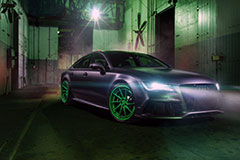How to Self-Check Whether Car Lights Are Off - Vol.432
Are your car lights out? If you are by yourself, it may be difficult to check. But there are a few ways you can check your car lights yourself.

Not only is having some lights out illegal in some areas, but it can also be a safety hazard so it's important to know whether those lights need to be replaced before you get out on the road.
Here are some simple tips to check your own car lights. There's no need to enlist another person. This article goes over how to self-check whether car lights are off by yourself.
Check Your Brake Lights
Brake lights are integral for safety - yours and the motorists around you. So not having working lights is a big deal. Luckily, there are a couple of ways to check them yourself.
Use Your Rearview Window and a Reflective Surface
Windows, mirrors, or other reflective surfaces are a great way to check if your lights are coming on. Simply park with your rear lights facing a store window or other reflective surface. Turn your car on and make sure that it's not in gear. Pump on the brake pedal and check the reflection to see if all your brake lights are working properly.
This is one of the simplest ways of checking your lights on your own. And you can do it whenever you park near a window or other similar reflective surface.
Get out of the Car Yourself
If you don't have a reflective surface available, you can also check the lights yourself. Ideally, you can enlist a friend to do this for you. But if that's not possible, this method is simple to do by yourself.
First, turn on your vehicle and make sure that it is not in gear. Next, get out of your car and use a broom or mop to press the brake pedal down. You may find a pole-like gadget that does this, too. But a broom or mop handle works just as well.
Next, keep pressing down until your brake engages. Lock the broom handle into place against your seat cushion so the pedal remains pressed down. And then go around to the back of your car and check your lights.
Brake Light Tester
If you want more assurance than a visual check, you can also buy a brake light tester. These plug-in testers can check your circuitry to make sure everything is connected the way it should be.
Furthermore, remember that most newer cars have 3 brake lights. Two are on either side of the rear bumper, and the third one is generally mounted in the lower center of the back window.
If you find that one of the car lights is out, it may be one of 3 reasons:
- Fuse blown for brake light system
- Brake light bulb(s) burned out
- Brake light wiring switch is broken
Checking Front Headlights and Turn Signal Lights
If you are concerned about checking your front headlights, that's easy to do yourself. You can simply shine your lights against a building or turn them on in the dark. Either way, you can see whether both front lights are working or not.
You can also do a visual check yourself if you prefer. Wait until it gets dark, or park in a dark garage, and turn on your headlights. Make sure your car parking brake is engaged and your car is not in gear. And then get out of your car and check the front.
You can do the same for your turn signal lights. Hit left turn and check the lights (just the front and the side, as the rear would have been covered under brake lights). Do the same for the other side.
Final Thought
Having someone check your lights for you may be the easiest way to see if your car lights are off. But it isn't the only way. There are a variety of options you can use to check your car lights yourself.
Lastly, make sure you check your lights regularly. You don't want to realize that one of your lights is out while you're driving around. That can be hazardous for you and other motorists around you.